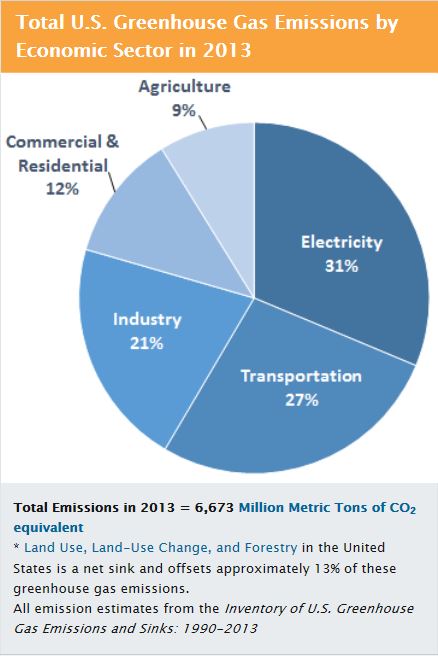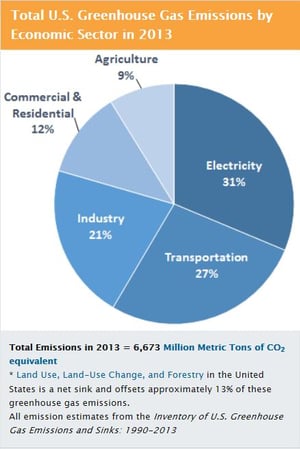5 min read
EPA’s Clean Power Plan Creates More Questions for Renewables
John Greene
:
August 10, 2015

“It’s time for America, and the world, to act on climate change.” So said President Barrack Obama in a recent Twitter video announcement, fittingly displaying his social media shrewdness as he continues to connect with younger generations alarmed by climate change and emboldened by a responsibility for solving it. While his plan will have a number of broad implications at home, the President has preferred to lead by example when seeking to affect global social and political changes. To that end, his latest announcement is clearly an effort to build international cooperation towards solving the complex issues involving climate change ahead of the UN Paris Climate Change Conference in November.
Using Environmental Protection Agency’s (EPA) Clean Power Plan (CPP), the President’s comprehensive set of new regulations is focused on cutting power plant emissions 32 percent by 2030 (from 2005 levels). The goal may seem aggressive at first pass, but it is not far removed from “30-by-30” figure detailed within the proposed Renewable Electricity Standard sponsored by Senator Tom Udall (D-NM).
The final EPA rule will primarily affect large-scale electricity providers —particularly those that rely heavily on coal—which are responsible for contributing 31 percent of US total greenhouse-gas emissions (2013 data). Currently, power plants that burn coal produce roughly 40 percent of the nation’s electricity, which is down from about 50 percent just a decade ago. To get an idea for the scope, the rule could affect 1,600 power plants nationally, roughly 600 of which operate on coal.

The new rule will also provide a set of targets for each state and requires that each state submit plans to the Agency by 2018 detailing its strategies towards accomplishing the mandated goals. This flexibility at the state level is needed to account for the oftentimes drastic geological differences and access to natural resources that occur between states. Kentucky and West Virginia, for instance, generate most of their electricity from coal whereas California generates very little. How individual states reach their targets going forward will be at their own discretion. The White House fact sheet detailing the CPP says, “All low-carbon electricity generation technologies, including renewables, energy efficiency, natural gas, nuclear and carbon capture and storage, can play a role in state plans.” The targets will begin to take effect in 2022, but the current administration will attempt to incentivize earlier action by offering credits to states that increase renewable sources in 2020 and 2021.
Moving forward, the rule will create two different sets of regulatory criteria; one set will apply to retrofitting existing power plants with technology that will help them meet the prescribed goals, and the other set will apply to new power plants to be built in the future. EPA states, “These proposed standards will ensure that new power plants are built with available clean technology to limit carbon pollution, a requirement that is in line with investments in clean energy technologies that are already being made in the power industry. Additionally, these standards provide flexibility by allowing sources to phase in the use of some of these technologies, and they ensure that the power plants of the future use cleaner energy technologies -- such as efficient natural gas, advanced coal technology, nuclear power, and renewable energy like wind and solar.”
Questions Remain for Renewables
Although the White House fact sheet makes consistent mention of both wind and solar technologies, other renewable energy sources—in particular forest biomass residues—receive no attention. According to the (albeit brief) fact sheet, the CPP will:
-
Drive more aggressive investment in clean energy technologies than the proposed rule, resulting in 30 percent more renewable energy generation in 2030 and continuing to lower the costs of renewable energy.
-
Give a head start to wind and solar deployment and prioritize the deployment of energy efficiency improvements in low-income communities that need it most early in the program through a Clean Energy Incentive Program.
With no overt mention in the public-facing documents, the application of forest biomass as a low-carbon, renewable alternative seems uncertain at this point. Can one assume that forest biomass residuals are included in the “clean energy technologies” referenced above?
Regarding the announcement of the CPP, Donna Harman, President and CEO of American Forest & Paper Association (AF&PA), noted, “We are reviewing both the final Clean Power Plan and the proposed Federal Implementation Plan to ensure that biomass energy produced from forest products manufacturing residuals is recognized as a carbon benefit to the atmosphere. We’re concerned that purchased electricity costs for manufacturers will increase as a result of this EPA action and the nation’s grid reliability will be further jeopardized. We believe that the final rule is an unprecedented federal intrusion on local energy mix decisions previously in the hands of the states and consumers.”
While wind and solar energies sound great in administration talking points and on CPP promotional materials, the reality is that these technologies are simply cost prohibitive at this point. Transitioning to these resources on a commercial scale might be realistic in some states, but they would be extremely expensive to implement resulting in substantially higher energy costs for the American consumer. As we stated in a blog post earlier this summer, a 2014 Forbes report noted that the UK (currently the world’s leading importer of wood pellets) has cooled on certain renewables sectors due to costs and other challenges. Interest in offshore wind technology—once a popular concept for the Scottish coastline, which is indeed windy—has been scrapped by major utilities due to “infeasibility.” Rather, there is growing interest in nuclear energy expansion and the UK has approved construction of two new reactors that will provide 7 percent of its total electricity.
As a time-tested feedstock, forest materials should play a pivotal role as both a “bridge” and primary, low-carbon energy source while many of the 600 affected power plants shift their focus from coal and the country expands its energy portfolio. Forest biomass resources in America are in great abundance, and large-scale thermal heat technology already exists and is effective. Expanding markets for forest products continue to drive investment in the sector, which has resulted in improved resource management practices and efficiencies. As the European Biomass Association (AEBIOM) has noted, the effect of a managed forest as a CO2 sink is ten times that of the primary forest.
- Managed forests sequester more carbon through growth than is extracted through harvest. In the case of regenerated timberland, carbon stocks are maintained or increase over time, creating zero carbon debt.
- An unmanaged forest will emit almost as much CO2 as it absorbs over its life cycle due to natural degradation. Since no wood was harvested in the end, no substitution effect resulted.
- An unmanaged forest that is destroyed due to natural causes (fungus, insects, fire, etc.) will actually have a detrimental effect by releasing large amounts of carbon. This process makes for a much slower decomposition/regeneration of the forest and its ability to offset carbon debt.
- Forest biomass is produced from material that has no other use or value on the market. Instead of being wasted, consuming it in the form of wood pellets as a substitute for fossil energy reduces carbon debt.
- The carbon released from burning remnants of a tree is less than the carbon sequestered by the entire tree during its life cycle; it is not a simple 1:1 conversion.
Do other fuel sources for large-scale electricity generation possess the same carbon-offsetting benefits that sustainable forest biomass offers? Looking at the list above, can the same be said for coal, natural gas or nuclear-generated energy? And compared to other popular renewables, does a solar-energy panel “farm,” for instance, offer the same CO2 sink advantage that a managed forest does? Such a large-scale solar operation for just a single site would likely result in the permanent deforestation of hundreds of acres.
The expansion of our nation’s energy portfolio is not up for debate; the CPP has been established to help accomplish this goal, and most would agree that energy diversity will lead to greater energy independence and affordability. If President Obama is seeking to lead by example in the production of cleaner electricity, he might do well to promote the proven, reliable and renewable resources currently growing within America’s working forests.





